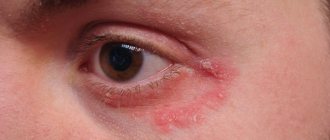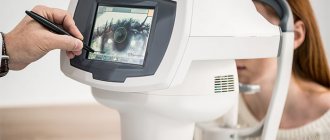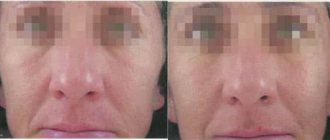Viral skin diseases
– a large group of diseases caused by the entry into the body of various viruses that affect the skin and mucous membranes, causing the appearance of foci of inflammation. Infections can be transmitted through contact or through common objects and personal belongings of the patient, as well as through sexual intercourse. Treatment of such diseases is a long and complex process that should take place directly under the supervision of a specialist!
Among the most frequently diagnosed pathologies:
- Molluscum contagiosum
- Herpes
- Papillomas
- Condylomas
- Warts
Each of these diseases has its own symptoms and course characteristics, and also requires complex treatment.
Stock
Antibody test for coronavirus (COVID-19)
from 2000 a
Rapid test for coronavirus (COVID-19)
Results within 25 minutes from the moment the biomaterial is submitted
1600a
Coronavirus (COVID-19) antibody test at home
from 4200 a
Coronavirus (COVID-19) test at home
from 4950 a
Coronavirus (COVID-19) test
2750a
Our clinics in St. Petersburg
Structural subdivision of Polikarpov Alley Polikarpov 6k2 Primorsky district
- Pionerskaya
- Specific
- Commandant's
Structural subdivision of Zhukov Marshal Zhukov Ave. 28k2 Kirovsky district
- Avtovo
- Avenue of Veterans
- Leninsky Prospekt
Structural subdivision Devyatkino Okhtinskaya alley 18 Vsevolozhsk district
- Devyatkino
- Civil Prospect
- Academic
For detailed information and to make an appointment, you can call +7 (812) 640-55-25
Make an appointment
Skin structure:
- Epidermis . It is the topmost layer and contains melanin, which is responsible for skin color.
- Dermis . It contains collagen and elastin fibers.
- Subcutaneous fat includes fat deposits and connective tissue. Its physiological function is to store and accumulate nutrients.
Skin diseases can be caused by viral infections, skin damage, STDs, heredity and metabolic disorders.
Pigmentation changes
Pigmentation disorders include depigmentation (loss of skin color) and hyperpigmentation (accumulation of skin color). Depigmentation can be caused by chemicals such as hydroquinine, phenol (and its derivatives), arsenic and mercury compounds. It can also be caused by ionizing and ultraviolet radiation, as well as thermal or physical trauma.
Hyperpigmentation can be caused by mineral oils, halogenated hydrocarbons, arsenic and various pharmaceuticals.
Types of skin diseases
Warts are basically benign skin growths in the form of a nodule or papilla.
A furuncle or boil is a purulent-necrotic inflammation of the hair follicle. The cause is pollution and microtrauma of the skin.
Herpes is a viral disease with characteristic rashes of blisters on the skin.
Ringworm includes in its concept a group of skin diseases of various etiologies. With it, small itchy nodules appear on the skin. The following types of disease are distinguished:
- Shingles is a viral disease with rashes and severe pain. The causative agent is the varicella zoster virus. It can hide in nerve cells and become activated long after entering them, causing inflammation. After 2-4 weeks, the body heals itself.
- Tinea versicolor is a fungal infection of the epidermis. Symptoms: small spots on the body with clear boundaries, increased sweating, itching. May develop in the presence of predisposing factors: excessive sweating; poor personal hygiene and maceration (soaking in liquid and swelling of the skin) of wet areas of the body; individual predisposition; disruption of the processes of death of the stratum corneum of the epithelium; decreased general immunity; the presence of chronic pathology (tuberculosis, diabetes mellitus, vegetative-vascular dystonia, etc.
- Pityriasis rosea is an infectious skin disease that is not transmitted to other people and belongs to the infectious-allergic group. People with low immunity are at risk.
- Ringworm is an infectious disease transmitted through direct contact with a sick person or animal. Symptoms of the disease include multiple red and pink spots throughout the body. After treatment, the room where the sick person lived must be cleaned with a special solution, often wash the body and head, change underwear and socks.
- Psoriasis is a chronic non-infectious disease. The disease causes the formation of large, red, dry patches raised above the surface of the skin. Accompanied by pain and severe skin itching. This type of skin disease often occurs in patients with HIV infection or AIDS. Making a diagnosis from a specialist is not difficult, since it is based on the appearance characteristic of the disease. In severe, progressive psoriasis, abnormalities in blood tests may be detected, which is due to the occurrence of an inflammatory autoimmune disease.
- Microsporia is mainly a contagious disease of animals, but can also be transmitted to humans. Causes damage not only to the skin, but also to the hair.
Scabies is a contagious scabies disease caused by a microscopic parasite. Characteristic signs of scabies are itching, rash and the appearance of pustules as a result of scratching. As a rule, the disease is seasonal and peaks in autumn and winter. Scabies is transmitted through direct contact with a patient (skin-to-skin), mainly through sexual contact.
Hives are a skin condition characterized by intensely itchy, raised, pale pink blisters. It can manifest itself as a reaction to an irritant, or be a symptom of a more serious disease. It has acute and chronic forms.
Eczema is a chronic or acute inflammatory skin disease. It is not contagious, but has a neuro-allergic nature. It is characterized by a rash, itching and is prone to recurrence. The disease can occur under the influence of both external and internal (various diseases) factors.
Demodex - iron mite. It lives in the ducts of the sebaceous glands and hair follicles, and leads to hair loss, eyebrows, eyelashes, and the development of acne. It is considered an opportunistic microorganism due to the fact that it lives on the skin of the face and in healthy people. Under the influence of various diseases, activation and increase in quantity occurs. Signs of iron mite proliferation include itchy skin, heaviness in the eyes, and inflammation of the eyelids.
Skin and soft tissue infections
1. BASIC CONCEPTS Website is a personal website (indicate the affiliation of the site), located on the Internet at the address: www.begma.ru. Site Administration – IP Smirnova Lyudmila Petrovna644 048 Omsk, st. Angarskaya 2 sq. 8. User – an individual or legal entity who has posted his personal information through the Feedback Form on the site with the subsequent purpose of transferring data to the Site Administration. Feedback form is a special form where the User places his personal information for the purpose of transferring data to the Site Administration. 2. GENERAL PROVISIONS 2.1. This Privacy Policy is an official standard document of the Site Administration and determines the procedure for processing and protecting information about individuals and legal entities using the Feedback Form on the Site. 2.2. The purpose of this Privacy Policy is to ensure adequate protection of information about the User, incl. his personal data from unauthorized access and disclosure. 2.3. Relations related to the collection, storage, distribution and protection of information about users are governed by this Privacy Policy and the current legislation of the Russian Federation. 2.4. The current version of the Privacy Policy is a public document, developed by the Site Administration and is available to any Internet User by clicking on the “Privacy Policy” hypertext link. 2.5. The Site Administration has the right to make changes to this Privacy Policy. 2.6. When changes are made to the Privacy Policy, the Site Administration notifies the User by posting a new version of the Privacy Policy on the Site www.begma.ru. 2.7. When a new version of the Privacy Policy is posted on the Site, the previous version is stored in the documentation archive of the Site Administration. 2.8. By using the Feedback Form, the User agrees to the terms of this Privacy Policy. 2.9. The Site Administration does not verify the accuracy of the information received (collected) about the User. 3. CONDITIONS AND PURPOSE OF COLLECTION AND PROCESSING OF USERS' PERSONAL DATA 3.1. Personal data of the User such as: first name, last name, patronymic, e-mail, telephone, skype, etc., are transferred by the User to the Site Administration with the consent of the User. 3.2. The transfer of personal data by the User to the Site Administration through the Feedback Form means the User’s consent to the transfer of his personal data. 3.3. The Site Administration processes information about the User, incl. his personal data, such as: first name, last name, patronymic, e-mail, telephone, skype, etc., as well as additional information about the User provided by him at his own request: organization, city, position, etc. in order to fulfill obligations to User of the Site. 3.4. The processing of personal data is carried out on the basis of the principles: a) the legality of the purposes and methods of processing personal data and good faith; b) compliance of the purposes of processing personal data with the goals predetermined and stated when collecting personal data; c) compliance of the volume and nature of the processed personal data with the methods of processing personal data and the purposes of processing personal data; d) the inadmissibility of combining databases containing personal data created for incompatible purposes. 3.5. The Site Administration processes the User’s personal data with his consent for the purpose of providing services/selling goods offered on the Site. 4. STORAGE AND USE OF PERSONAL DATA The User’s personal data is stored exclusively on electronic media and is used strictly for the purpose specified in clause 3 of this Privacy Policy. 5. TRANSFER OF PERSONAL DATA 5.1. The User's personal data is not transferred to any third parties, except for the cases expressly provided for in this Privacy Policy and specified in the Consent to the newsletter.
5.2. The provision of the User’s personal data at the request of state bodies and local governments is carried out in the manner prescribed by the legislation of the Russian Federation. 6. STORAGE TERMS AND DESTRUCTION OF PERSONAL DATA 6.1. The User’s personal data is stored on the website’s electronic media indefinitely. 6.2. The User’s personal data is destroyed at the request of the User himself based on his request, or at the initiative of the Site Administrator without explanation, by deleting the information posted by the User by the Site Administration. 7. RIGHTS AND OBLIGATIONS OF USERS Users have the right, upon request, to receive from the Site Administration information regarding the processing of their personal data. 8. MEASURES TO PROTECT USER INFORMATION The Site Administrator takes technical, organizational and legal measures to ensure the protection of the User’s personal data from unauthorized or accidental access to it, destruction, modification, blocking, copying, distribution, as well as from other unlawful actions. 9. USER REQUESTS 9.1. The User has the right to send his requests to the Site Administration, incl. regarding the use/deletion of his personal data, provided for in clause 3 of this Privacy Policy in writing to the address specified in clause 1. 9.2. The request sent by the User must contain the following information: for an individual: – number of the main document identifying the User or his representative; – information about the date of issue of the specified document and the issuing authority; – date of registration via the Feedback Form; – text of the request in free form; – signature of the User or his representative. for a legal entity: – request in free form on company letterhead; – date of registration via the Feedback Form; – the request must be signed by an authorized person accompanied by documents confirming the person’s authority. 9.3. The Site Administration undertakes to consider and send a response to the User's request within 30 days from the date of receipt of the request. 9.4. All correspondence received by the Administration from the User (applications in written/electronic form) refers to restricted information and is not subject to disclosure without the written consent of the User. Personal data and other information about the User who sent the request cannot be used without the special consent of the User other than to respond to the topic of the received request or in cases expressly provided for by law.
Methods for studying skin diseases
When diagnosing skin diseases, in addition to external examination, various methods can be used to make an accurate diagnosis:
- Examination under Wood's lamp . The study uses ultraviolet rays passed through special glass. Hairs affected by different types of skin diseases will appear differently.
- Cytological examination is carried out in order to identify acantholytic cells that can cause the development of true pemphigus (pemphigus).
- Swabs are given to detect the pathogen.
- biopsy .
In addition to all this, a blood test is performed for tumor markers and identification of infections of various origins. The sooner the cause of a skin disease is identified, the sooner treatment will begin, and as a result, recovery will occur.
Skin cancer
Skin cancer is the most common type of cancer and usually develops in exposed areas of the skin. The incidence is highest among workers, athletes and sunbathers and is inversely proportional to the amount of melanin pigmentation in the skin.
Skin cancer can be caused by ultraviolet rays (both solar and artificial), ionizing radiation, polycyclic aromatic hydrocarbons, tar and resin products.
Skin cancer is often asymptomatic at first. The most common presentation is an irregular red or pigmented lesion that does not go away. Any lesion that appears to be enlarging should be biopsied—whether there is tenderness, mild inflammation, crusting, or intermittent bleeding. With early treatment, most skin cancers are curable.
Treatment
Treatment of skin diseases is carried out in several stages:
- Balanced therapeutic nutrition;
- Saturation of the body with vitamins and antibiotics;
- Strengthening the overall immunity of the body;
- Powders, ointments, compresses;
- Thermal procedures;
- Ultraviolet irradiation of blood;
- Cryotherapy;
- Phytotherapy.
When the first symptoms of skin diseases appear, you should immediately consult a dermatologist.









